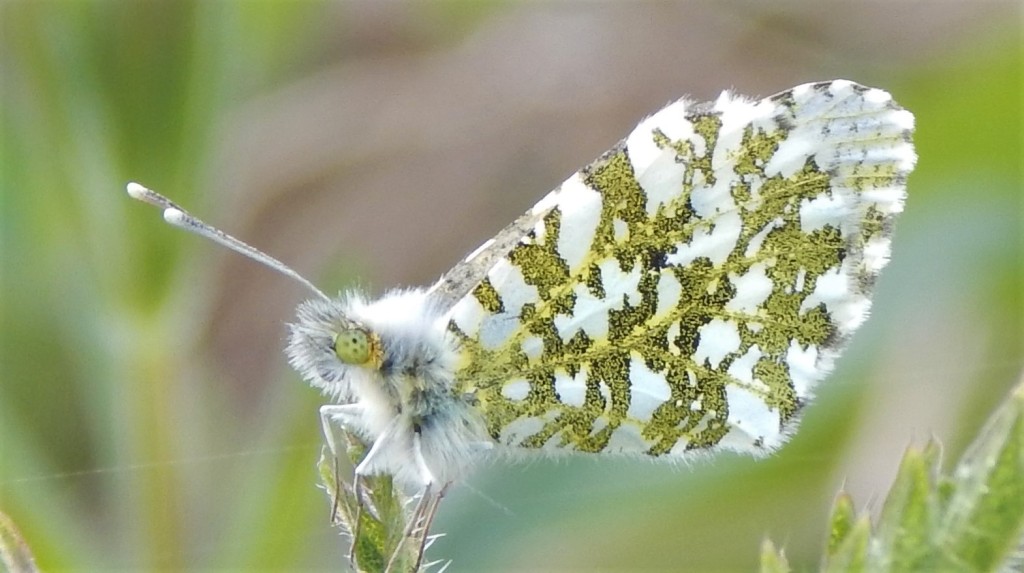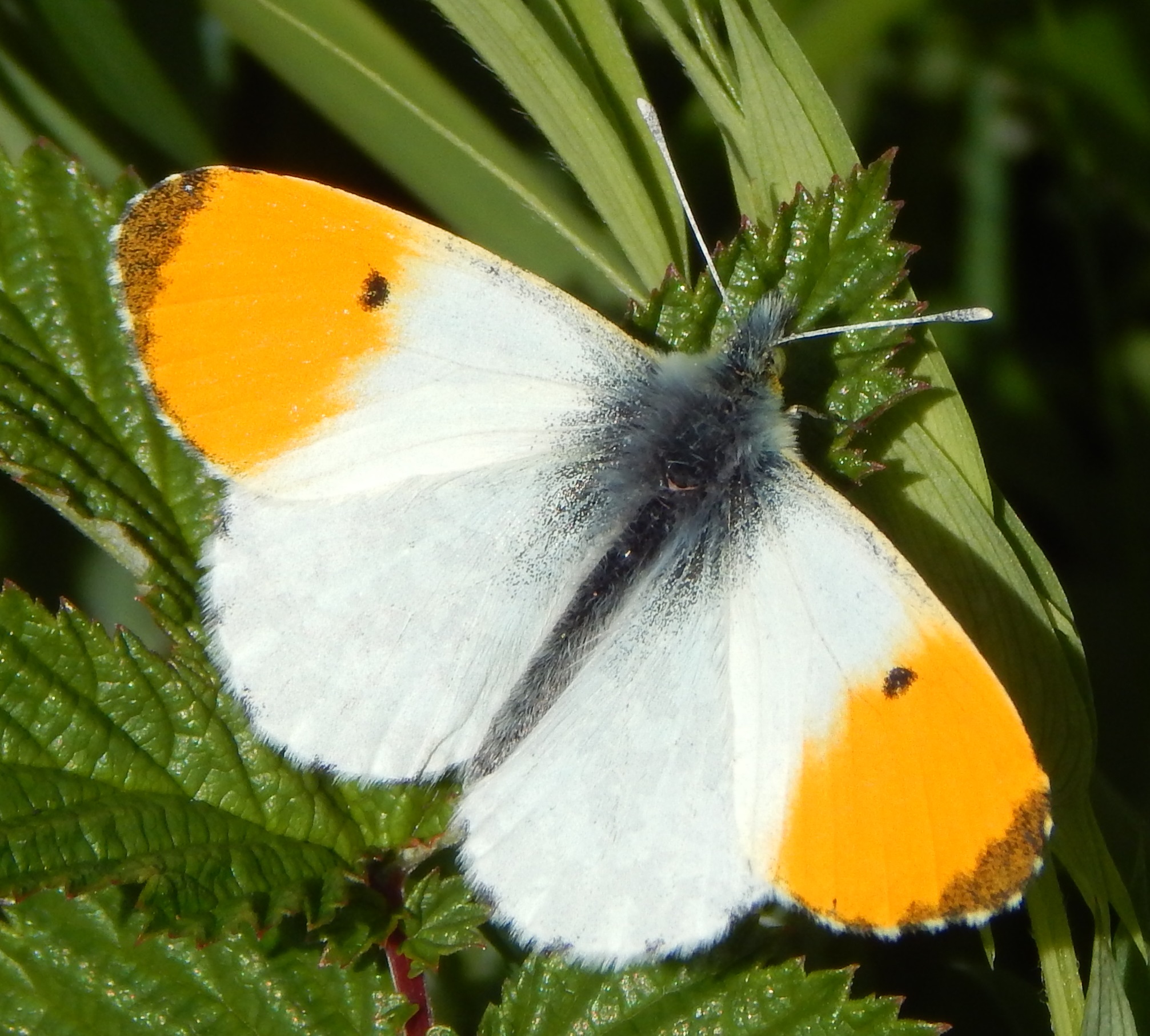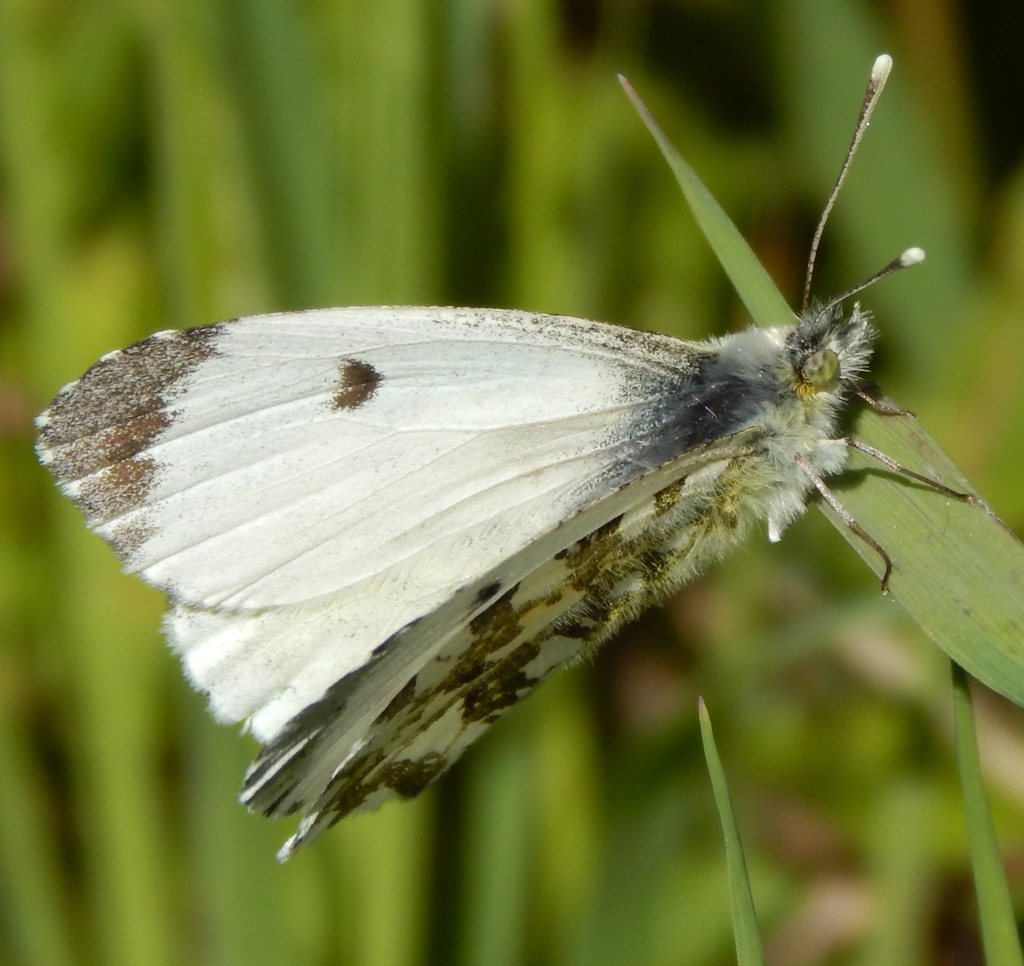[027] Anthocaris cardamines, Orange Tip

Introduction
Anthocaris cardamines, the Orange Tip, is a common butterfly throughout Europe. Only the male has the striking orange tips to its wings. The upper wings of the female look similar to the plain white butterflies of its family.
The underwings of both sexes have a striking mottled greenish pattern, useful in camouflage.
Taxonomy
Kingdom – Animals
Phylum – Arthropods
Class – Insects
Order – Lepidoptera (Butterflies and Moths)
Family – Pieridae (Whites)
Genus – Anthocharis
Scientific Name – Anthocharis cardamines
Name
This butterfly is unusual in having no qualifier to its name. There are about twenty Anthocaris species, almost all of which are Orangetips of some kind (Mexican Orangetip, Southern Rocky Mountain Orangetip etc.) But the Orange Tip isn’t the Eurasian Orangetip or the Common Orangetip. It is just the Orange Tip.
The name, of course, comes from the upper wing markings of the male.
All I can find for Anthocharis is, perhaps Ancient Greek ‘beautiful small bird.’
Description
Its appearance is unusual as it’s the only British butterfly to show significant sexual dimorphism and the only one where the male is more colourful than the female.
I have started with the underside in my first picture (similar for both male and female) but it’s the top of the wings of the male that give this species its name.


The female looks very similar to other butterflies in the Pieridae family.

Habitat
The Orange Tip is common and widespread across Britain and much of Europe and the Near East. Larvae feed on a variety of plants, mostly in the Cabbage and mustard family, Brassicaceae.
Males tend to keep to the edge of forests while the females frequent meadow habitats. They feed on all the flowers in the area rather than seek out particular plants.
They are very selective when egg-laying, which they will only do in sunlight on a brassica plant in full flower that does not already have an Orange Tip egg on it. [The egg has a pheromone that deters another female. Where two eggs do hatch on one plant, the first to emerge will cannibalize the other.]
Other Notes
I see large numbers of these, almost all male, in early Spring.
See also
For other white butterflies see [267] Large and Small White Butterflies.
